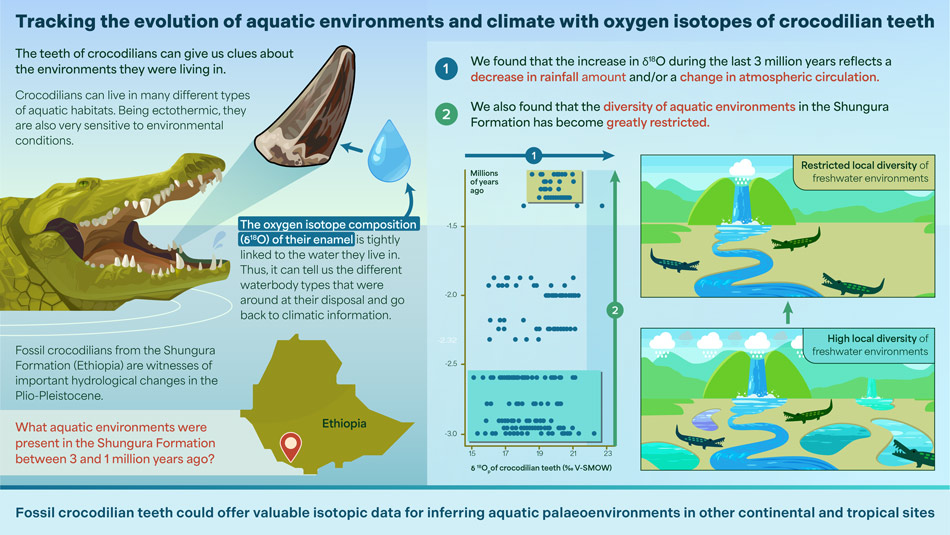Publication
Biogeosciences
January 2024
Stable oxygen isotopes of crocodilian tooth enamel allow tracking Plio-Pleistocene evolution of freshwater environments and climate in the Shungura Formation (Turkana Depression, Ethiopia)
This study adopts a new approach describing palaeohydrology and palaeoclimates based on the interpretation of stable oxygen isotopes (δ18Op) recorded in fossil crocodilian teeth. They represent an archive of prime interest for tracking freshwater palaeoenvironmental change, applicable to many palaeontological localities in the world: crocodilian teeth are abundant in continental basins and have been widely distributed since their diversification during the Mesozoic; the enamel phosphate is resistant to diagenesis and retains its original isotopic composition over geological timescales; and their δ18Op mainly relies on that of the crocodilian’s home waterbody (δ18Ow), which in turn reflects waterbody types, regional climate, and evaporation conditions. This study presents the first application of this theoretical interpretative model to the Shungura Formation (Lower Omo Valley, Ethiopia), a key witness of the important environmental change in eastern Africa during the Plio-Pleistocene that impacted the evolution of regional faunas, including humans. In this complex and variable environmental context, the δ18Op of coexisting crocodilians allows for the fingerprinting of the diversity of aquatic environments they had access to at a local scale. This study sheds light on two important results: the δ18Op of crocodilian teeth (1) indicates stable aquatic environments in the northern Turkana Depression from 2.97 to ca. 2.57 Ma but a decline in local waterbodies diversity after 2.32 Ma, suggesting increasing aridity, and (2) shows, like previous geochemical studies on palaeosols and bivalves in the area, a significant increase in δ18Ow from 2.97 to ca. 1.14 Ma, likely due to the shifting air stream convergence zones between the West African and Indian Summer Monsoons and/or reduced rainfall over the Ethiopian Highlands.
Read more…
References
Gardin A., Pucéat E., Garcia G., Boisserie J.-R., Euriat A., Joachimski M. M., Nutz A., Schuster M., Otero O. 2024 – Stable oxygen isotopes of crocodilian tooth enamel allow tracking Plio-Pleistocene evolution of freshwater environments and climate in the Shungura Formation (Turkana Depression, Ethiopia) – Biogeosciences,21,437–454 – https://doi.org/10.5194/bg-21-437-2024


